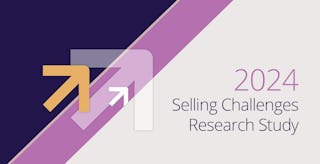Soap Isn’t Good Enough In Pharmaceutical And Medical Device Sales

SOAP is an acronym for the items one should include in a medical chart. It is also a method used by physicians to present clinical data to one another. It stands for Subjective, Objective, Assessment, Plan. This process has been adapted to train pharma sales reps on how to present clinical papers. FYI: this is a mechanism for presenting data, not for understanding the validity, significance and relevance of the study, like Evidence-Based Solution Selling.
Understanding the SOAP Format
The SOAP Format: The benefits of the SOAP format are that it can be tailored to any type of study or study visit and that, if done properly, will satisfy both the medical record needs for the continuing care of the client and the source documentation requirements for the study. Below is a broad definition of the components of the SOAP format and then three examples of how it might be used in specific scenarios.
- S (SUBJECTIVE): The subjective component is the client’s report of how he or she has been doing since the last visit, and this includes the current visit. Subjective comments made by clients may range from no complaints (“I feel great”) to specific, current complaints (“I’ve had a headache for 3 days”) to complaints that took place in the interim but have resolved (“3 weeks ago, I had diarrhea for a couple of days”). For an infant’s record, the subjective component would include the mother’s (or caretaker’s) observations. Again, these may range from no complaints (“The baby is happy and healthy”) to a specific, current complaint (“the baby’s been fussy lately”) to a complaint that has been resolved (“the baby had a nappy rash, but it’s all better now”). The client should be asked direct questions about any complaints – current or reportedly resolved — and ask appropriate follow-up questions and document all responses. Reports of compliance with specific treatment regimens, whether they’re study-related or not, should also be included here: “How much of your study medication did you take since your last visit? Did you miss any doses? Why?” or “At the last visit, you were given antibiotics for pneumonia. Do you have any pills left?”
- O (OBJECTIVE): The objective component is straightforward and includes vital signs (temperature, blood pressure, pulse, respiration), documentation of the physical examination that was done, and results of laboratory or other studies that may be done during the course of this visit. For a client with no complaints, the physical exam may be limited to meet study-specific needs. For a client with a complaint, an appropriate focused physical exam should be completed in addition to, or instead, of the study-specific exam.
- A (ASSESSMENT): For this component, the clinician pulls together the subjective information gathered during the interview with the client and the objective findings of the physical exam (and, possibly, laboratory or other study results) and consolidates them into a short assessment: “This is a 26-year old woman here for a routine HPTN microbicide study visit; there are no clinical problems today” or “This is a 22-year old pregnant woman, 26 weeks gestation by physical exam, here for a non-study visit due to chief complaint of increased nausea for 1 week and vomiting for 2 days” or “This is a 46-year old HIV-infected man here for a routine HPTN study visit with increased fatigue and pallor; blood smear is positive for malaria.”
- P (PLAN): The plan should include anything that will be done as a consequence of the assessment and could include:
- The collection of study-specific labs or special studies
- The collection of labs or special studies to address an acute complaint
- Intention to admit to the hospital
Moving Beyond SOAP with Improved Clinical Selling Skills
The problem is that many sales organisations have already checked the box for clinical selling skills. Perhaps they’ve trained on the basic skills of SOAPing and reprint. Or maybe, marketing sends out clinical selling roadmaps with each reprint.
In the past, these practises may have been good enough. But today, representatives need to know how to critically appraise clinical data to understand what clinical questions the data answers. And then, they have to discuss their solutions in the context of validity, significance and clinical relevance with a healthcare practitioner.
Clinical selling skills are now one of the largest areas of focus for healthcare sales teams. We’ve enabled many of the world’s leading healthcare organisations to upskill the clinical selling skills of their team, resulting in increased access and market share.

Pharmaceutical Sales Training Programmes
Learn about our training programme designed specifically for pharmaceutical sales teams.
DownloadGet industry insights and stay up to date, subscribe to our newsletter.
Joining our community gives you access to weekly thought leadership to help guide your planning for a training initiative, inform your sales strategy, and most importantly, improve your team's performance.






